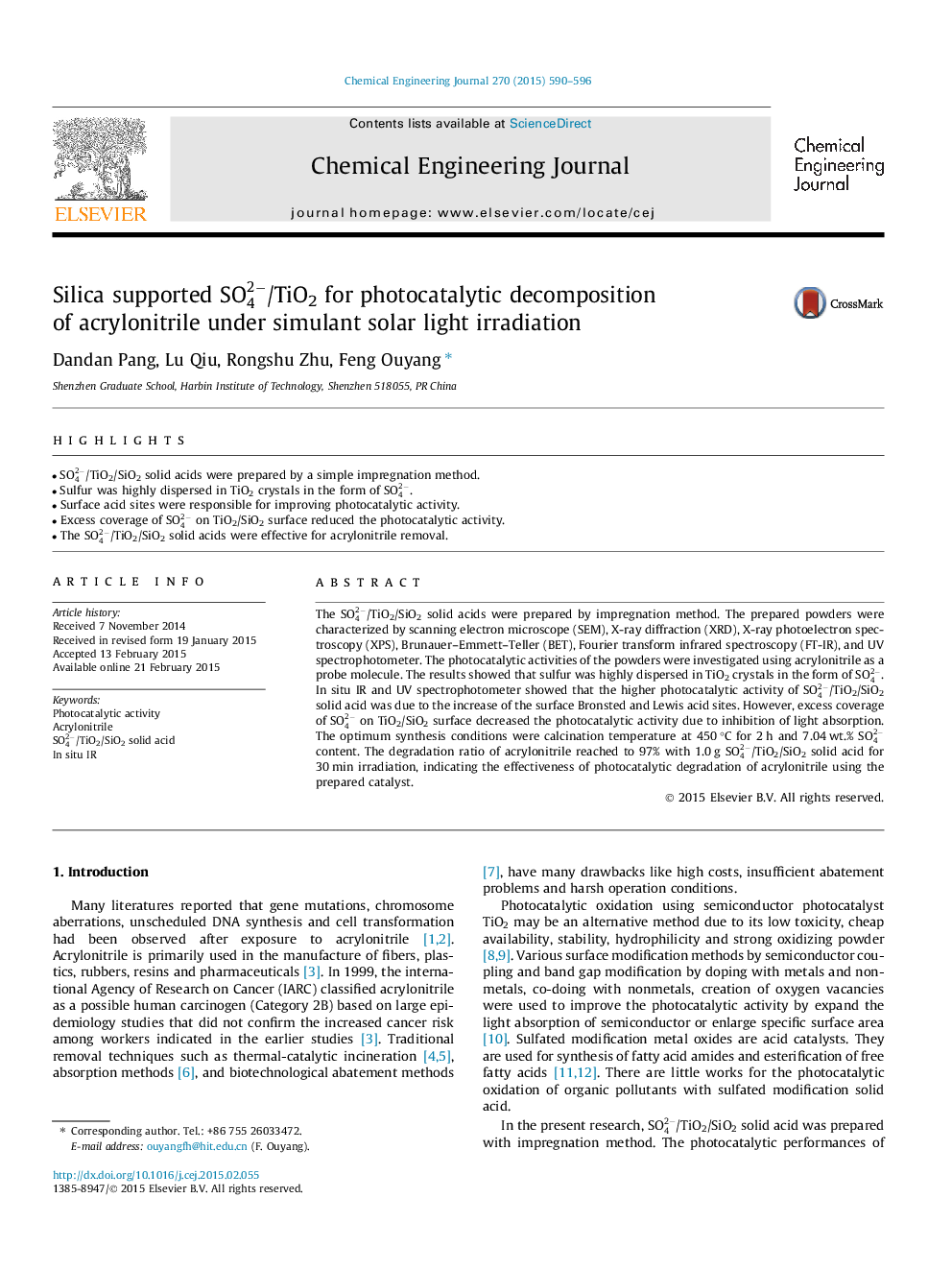| Article ID | Journal | Published Year | Pages | File Type |
|---|---|---|---|---|
| 146476 | Chemical Engineering Journal | 2015 | 7 Pages |
•SO42-/TiO2/SiO2 solid acids were prepared by a simple impregnation method.•Sulfur was highly dispersed in TiO2 crystals in the form of SO42-.•Surface acid sites were responsible for improving photocatalytic activity.•Excess coverage of SO42- on TiO2/SiO2 surface reduced the photocatalytic activity.•The SO42-/TiO2/SiO2 solid acids were effective for acrylonitrile removal.
The SO42-/TiO2/SiO2 solid acids were prepared by impregnation method. The prepared powders were characterized by scanning electron microscope (SEM), X-ray diffraction (XRD), X-ray photoelectron spectroscopy (XPS), Brunauer–Emmett–Teller (BET), Fourier transform infrared spectroscopy (FT-IR), and UV spectrophotometer. The photocatalytic activities of the powders were investigated using acrylonitrile as a probe molecule. The results showed that sulfur was highly dispersed in TiO2 crystals in the form of SO42-. In situ IR and UV spectrophotometer showed that the higher photocatalytic activity of SO42-/TiO2/SiO2 solid acid was due to the increase of the surface Bronsted and Lewis acid sites. However, excess coverage of SO42- on TiO2/SiO2 surface decreased the photocatalytic activity due to inhibition of light absorption. The optimum synthesis conditions were calcination temperature at 450 °C for 2 h and 7.04 wt.% SO42- content. The degradation ratio of acrylonitrile reached to 97% with 1.0 g SO42-/TiO2/SiO2 solid acid for 30 min irradiation, indicating the effectiveness of photocatalytic degradation of acrylonitrile using the prepared catalyst.
